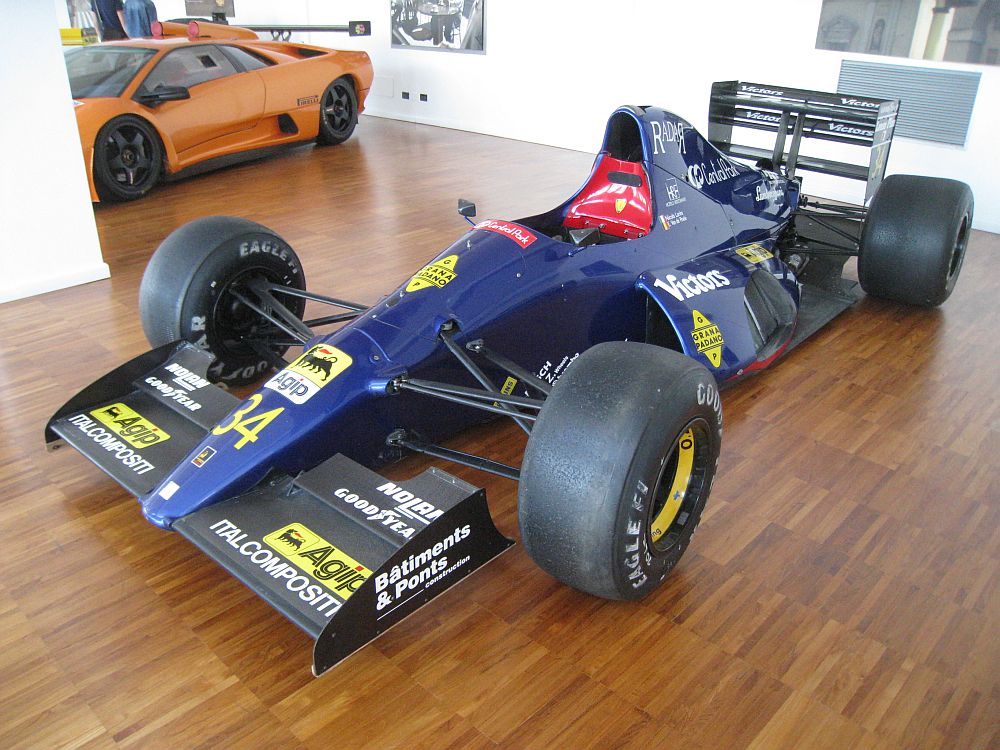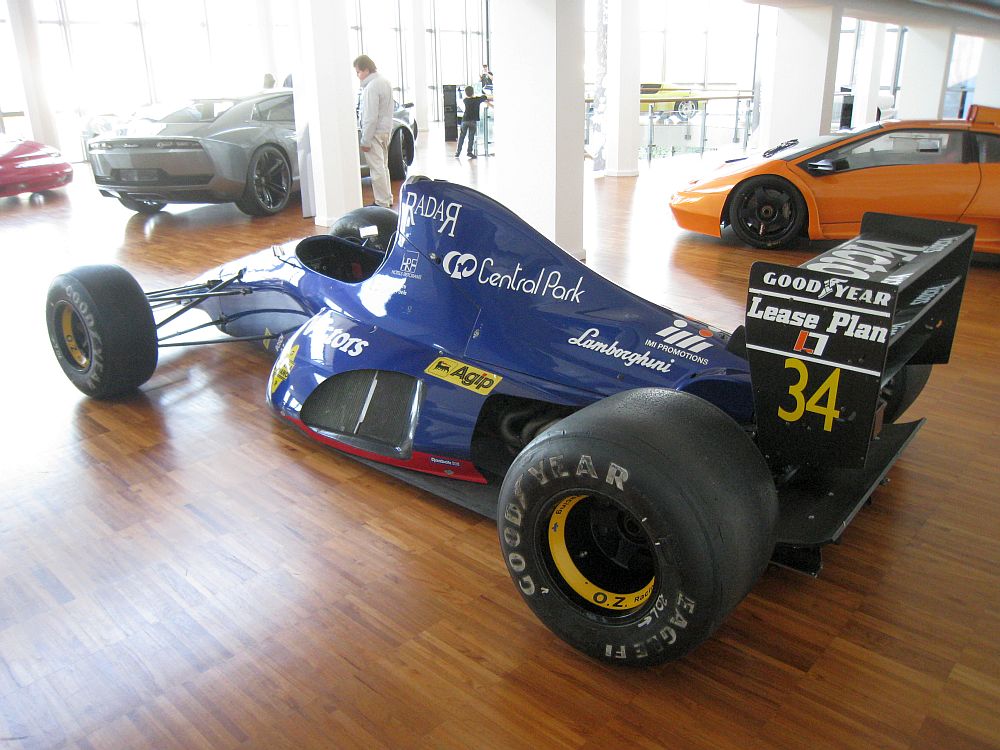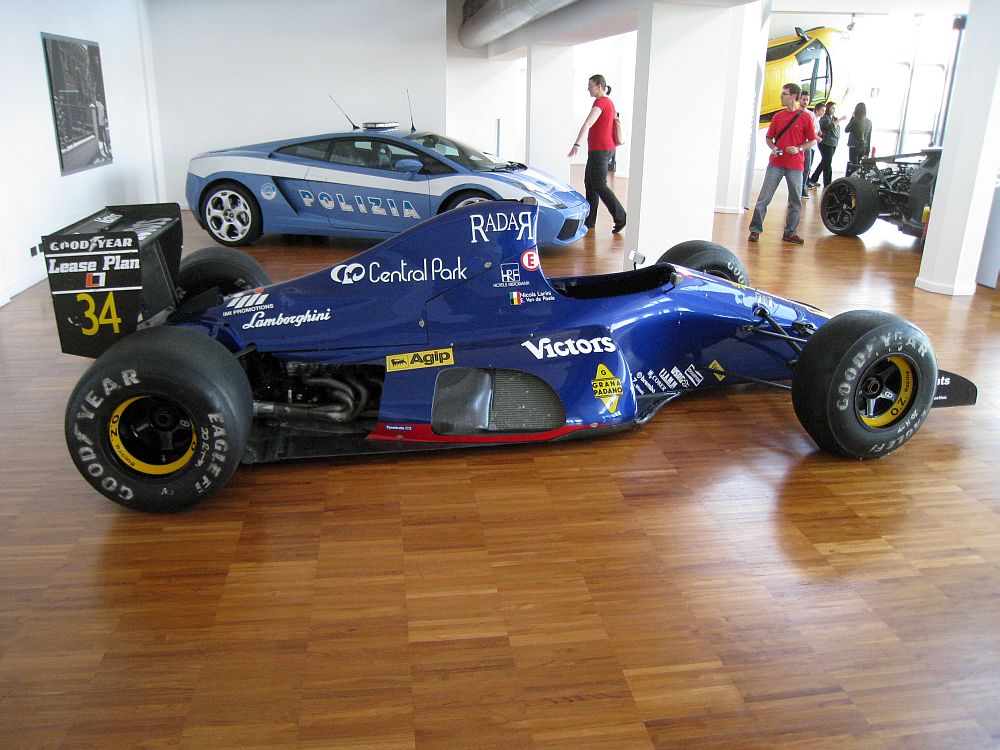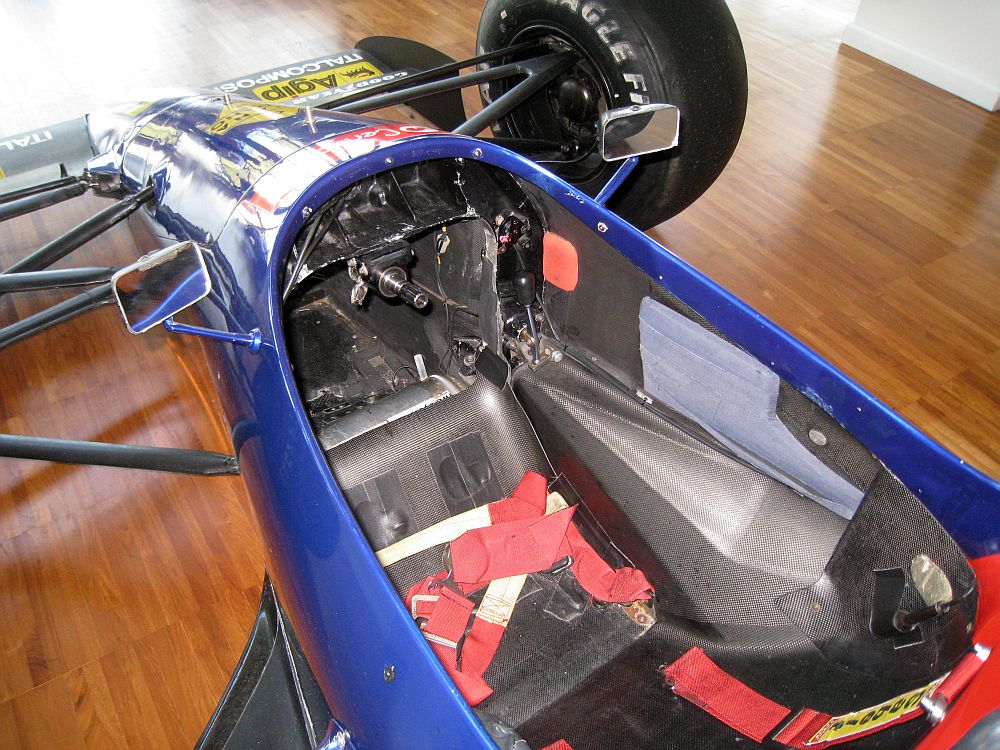Description
The Lamborghini Modena 291 F1 was Lamborghini’s bold but short-lived foray into Formula One—a dramatic and technically ambitious project that sought to bring the marque’s engineering prowess to the pinnacle of motorsport. Entering the 1991 Formula One season under the Modena Team banner, the 291 represented both the height of Lamborghini’s racing aspirations and the immense challenges faced by a small team trying to compete against established giants. Though its career was brief and results modest, the Modena 291 remains a fascinating chapter in Lamborghini’s history—a symbol of ambition, innovation, and the company’s enduring pursuit of performance excellence.
The Modena 291 originated from Lamborghini Engineering, the motorsport arm established by the company in 1988 under the ownership of Chrysler. The idea was to develop a Formula One car powered by Lamborghini’s new naturally aspirated V12 engine, which had been designed in-house for use by customer teams. This engine, known as the Lamborghini 3512, was a 3.5-litre, 60-degree V12 producing around 690 horsepower at 13,000 rpm—powerful, beautifully engineered, and characteristically Italian in sound and spirit. It had already been supplied to teams such as Larrousse and Lotus, but the 291 would be the first and only car to carry Lamborghini’s own name on the grid.
To bring the project to life, Lamborghini partnered with the Modena Team, a small racing operation backed by businessman Mauro Forghieri, the former Ferrari engineer who had helped design some of the Scuderia’s most successful Formula One cars. The team’s headquarters were based in Modena, Italy—hence the name—while Lamborghini provided technical and financial support. The 291’s chassis was designed by Mauro Forghieri and Nigel Cowperthwaite, with construction handled by the composite specialists at Advanced Composites in the UK.
The result was an elegant and technically sophisticated car, notable for its clean aerodynamics and distinctive twin-nose design. The twin-nose concept was one of the Modena 291’s most innovative features: instead of a single central nosecone, the car’s front wing and suspension were supported by two narrow, parallel nose sections separated by a central gap. This configuration was intended to improve airflow under the car and enhance ground effect, creating more downforce without increasing drag. It was a bold aerodynamic experiment that predated similar twin-keel suspension concepts by more than a decade.
The 291’s chassis was constructed from carbon fiber and Kevlar composites, giving it excellent rigidity and lightness. The suspension used double wishbones with pushrod-operated coil springs and dampers both front and rear. The gearbox was a Lamborghini-designed six-speed semi-automatic unit mounted transversely, and the car rode on Goodyear tyres. Weighing approximately 505 kilograms, it was competitive on paper, combining advanced aerodynamics, a powerful engine, and cutting-edge materials.
Powering the 291, Lamborghini’s 3512 V12 engine was both the car’s greatest strength and its Achilles heel. It delivered immense power and one of the most glorious sounds on the grid, but it was also heavy, thirsty, and occasionally unreliable. While the engine’s smoothness and linear power delivery impressed drivers, its complexity and high fuel consumption made it difficult to manage during races. The car’s handling was balanced but lacked outright grip compared to rivals from McLaren, Williams, and Ferrari, whose cars benefited from far larger budgets and continuous development.
The Modena Team entered the 1991 Formula One season with two drivers: Nicola Larini, a talented Italian racer, and Eric van de Poele, a promising Belgian newcomer. The 291 made its competitive debut at the 1991 United States Grand Prix in Phoenix. Despite limited pre-season testing, Larini qualified 17th and managed to finish 7th—a strong start for a brand-new team. However, as the season progressed, reliability issues and a lack of development funding began to take their toll.
The team’s most dramatic moment came at the 1991 San Marino Grand Prix, held at Imola. In a chaotic race filled with retirements, van de Poele drove superbly, climbing into 5th place near the end—set to score the team’s first world championship points. Tragically, on the final lap, a fuel pressure problem caused the car to lose power, and he dropped out of the points just before the finish. It was a heartbreaking moment that perfectly captured the promise and frustration of Lamborghini’s F1 adventure.
Throughout the 1991 season, the Modena 291 showed flashes of potential but never achieved consistent results. The team’s small size and limited resources meant that development lagged behind competitors. Engine reliability issues persisted, and by mid-season, Lamborghini’s management began to lose confidence in the project’s viability. The team failed to qualify for several races, and by the end of the year, funding had dried up. The Modena Team withdrew from Formula One after just a single season, bringing Lamborghini’s direct involvement in F1 to an end.
Despite its short lifespan, the Modena 291 left an enduring legacy. The Lamborghini 3512 engine continued to appear in other teams’ cars, and its engineering excellence impressed even Ferrari engineers—so much so that in 1993, Ferrari secretly tested a Formula One car fitted with a Lamborghini V12. That test, conducted by driver Jean Alesi, reportedly produced one of the best-performing Ferrari chassis-engine combinations of the era, though it was never raced.
The Modena 291 remains a poignant reminder of Lamborghini’s ambition to prove itself on the global motorsport stage. Its twin-nose design was decades ahead of its time, its engine one of the finest-sounding in F1 history, and its story one of courage and creativity in the face of enormous odds.
Today, the surviving Modena 291 chassis—finished in its distinctive turquoise livery with white accents—stands as a rare symbol of Lamborghini’s Formula One adventure. Though the team never scored a championship point, the car is remembered fondly by enthusiasts for its innovation, beauty, and audacity. The Lamborghini Modena 291 F1 was a car that dared to take the raging bull from the road to the racetrack—and, for one brilliant season, carried that spirit into the fastest arena of all.



